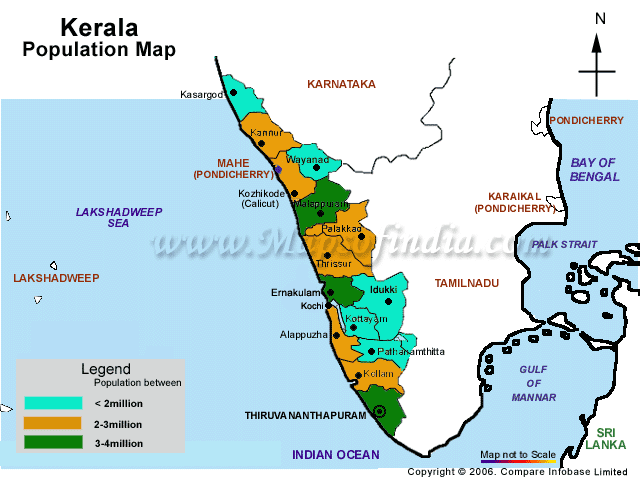Ethnicity:
Kerala has often been referred to as an ethnic jungle. The original mountain tribes here were Negritos. Then came the Proto-Australoids and the Dravidians. They were the main settlers here. Thus most Malayalis still are Dravidian descendents. Not much later the Aryans also settled in the land. Initially reluctant to intermingle, and bound by strict caste laws, the Aryans considered themselves the elite Brahmins. With the settling of a small number of Jews, European Christians etc. the ethnic diversity increased further. On date however, no person from Keralacan claim to be of a pure ethnic group. Intermingling and intermarriage has caused the sharp distinguishing features of their forefathers' ethnicity to get blurred.
Occupational Groups:
Traditionally the occupation of the natives of Kerala was farming and agriculture. Kerala is a rich and fertile land and the Dravidian settlers and natives made excellent use of this. Rice, tapioca, plantain, coconut, spices and a variety of vegetables were grown. The coastline provided excellent opportunity for fishing and opened up trade and commerce links with the rest of the world. With the advent of the Aryans, education, learning and culture took on a new dimension. Philosophy, literature, fine arts were developed and honed.
Even today agriculture remains Kerala's primary economic activity. The traditional crops aforementioned are still grown aplenty and almost 40 percent of the total land is under cultivation of cardamom, cashew nut, coconuts, coffee, ginger, pepper, rubber, and tea. Highly developed commercial poultry faming is practiced and chicken and egg supply throughout the state is met. Kerala is a highly developed seat of cottage industry. Besides the coconut fiber processing and handloom industries, a number of handicraft manufacturing units are developed in the state. Choir and cane products and wooden work especially the sandalwood carvings of the state are world famous. Ivory carvings are done by highly skilled workers. The brass and bell metal lamps and other items of the state are very famous. These cottage industries employ almost 3/5th of Kerala's industrial workers
Census Data:
According to the census report of 2001, Kerala's total population was about 32 million. Almost 91% of the populace is literate. And about 10.3 million i.e.32.3 percent are employed in some occupation or other. Almost 7.2 percent of the populationis employed in cultivation, 16 percent as agricultural laborers, 3.5 percent in household industries and the majority of 73.2 percent in other industries. A steep rise in the literacy has led to a rise in those employed in highly technical fields such as engineering, medicine, IT etc.
According to the Federation of Indian Chambers of Commerce and Industry there were about 1.5 million Malayalis settled in Gulf countries alone. The major problem Kerala is grappling with currently, despite its high rate of literacy and level of education is the brain drain. Most highly educated professionals prefer to work abroad due to the higher living standards and income opportunities. However the government and other organizations are working towards combating this issue and to ensure a comfortable living for the NRI Malayalis in other countries.
Last Updated on : 02/01/2013
Kerala Cities Map

